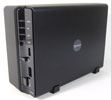Rosewill RNX-N150NUB WiFi Adapter Review: Old Tech in the New World
Closer Look and Benchmarks
RNX-N150NUB comes with a Quick Installation Guide and Resource CD. CD is very small as it only contains drivers, User Guide and Rosewill Wireless Adapter Utility. The actual device is embed in to the clear plastic holder to keep it in place.
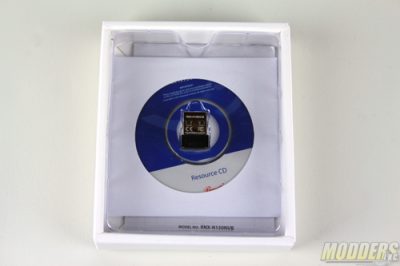 |
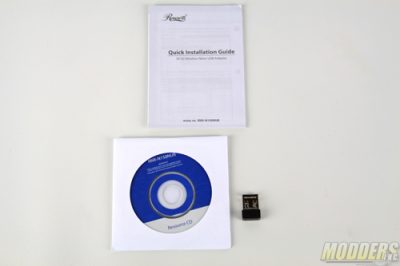 |
Test System
| Asus G75VW-DS73-3D |
| Asus RT-N66U Dual Band WiFi Router |
| ALLIED TELESYN AT-9924T ADVANCED LAYER 3+ GIGABIT 24-PORT NETWORK SWITCH, Boot (2.6.6-02) Cat6E cables used for network testing. |
| MSI 970 GAMING (server) |
| NetStress for testing |
There isn’t much to installation of the actual device. Just plug it in to your USB 2.0 connection and you are ready to install some drivers. Installing drivers is easy as well. Included CD contains a friendly Setup wizard that installs Drivers and or Rosewill Wireless Adapter Utility. The Rosewill Wireless Adapter Utility is very much universal. We have reviewed Rosewill WiFi Products in the past and they all use the same Utility. It is also worth to mention that there is no versions or build numbers on the Utility.
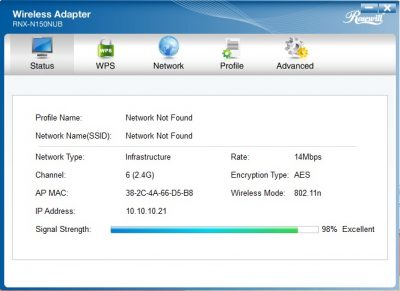 |
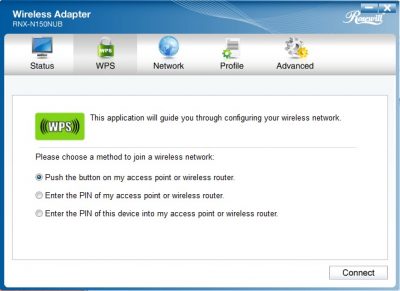 |
The signal strength in idle was pretty good 98-99%. Distance to the router was about 30 feet and I was going trough a couple of walls. I have also noticed that in the idle state the rate was around 14 Mbps. Once I have performed simple speed test Rate went up to 58 Mbps and the signal strength significantly dropped to 60’s %.
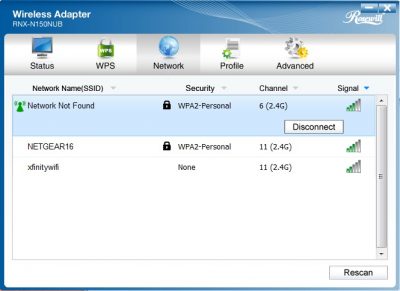 |
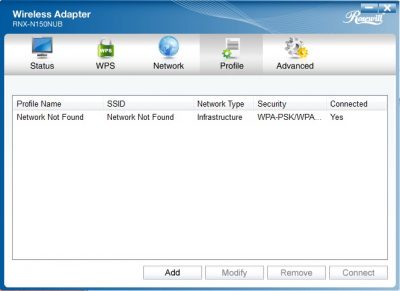 |
My router is a dual band router which can serve on 2.4 and 5 GHz networks. With RNX-N150NUB I could only see the 2.4 GHz network (Our SSID is “Network Not Found”). To remember networks I can use Profile tab to add or remove any potential networks I want to connect to automatically.
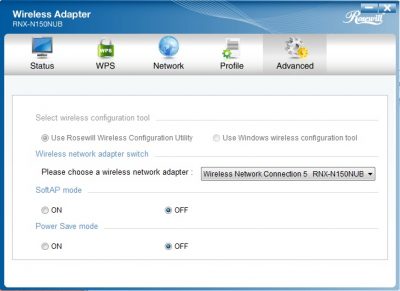 |
There are couple of options in Advanced section that were interesting. One of them was SoftAP mode. “SoftAP is an abbreviated term for “software enabled access point.” This is software enabling a computer which hasn’t been specifically made to be a router into a wireless access point. It is often used interchangeably with the term “virtual router”.-Wikipedia. So in short you can set up an access point with RNX-N150NUB.
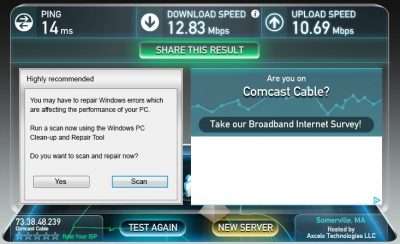 |
First test was to see what we can get from maximum available Internet Connection. My connection to the net is about 130 Mbps down and 15 Mbps up. With 2.4GHz connection my download speed was roughly 12 Mbps. Since my upload is capped to about 15Mbps all we got here is about 10 Mbps.
Transmitter
My next test was with use of NetStress Network Benchmarking Tool. First test here was to see how well does Transmitter work with just a single stream and how it would perform. Average speed here was just under 20 Mbps.
Adding 3 more Transmitting streams in to the picture gave me about 4.5 Mbps per stream. I am not overly impressed with the performance here.
Receiver
While testing the Receiver the performance under with single stream actually went down to 12 Mbps from 20 Mbps.
With all four streams running the average speeds per stream were around 3 Mbps which is lower than from 4.5 Mbps on Transmitter.
So what do these stream all mean? Think of them as separate connections to the device. Each stream will try to use maximum allowance of bandwidth. So if we have 4 streams coming/going from the device, this means that each stream will get 25% of the total bandwidth. All streams in our benchmarking equal 100% of the available bandwidth which is offered trough RNX-N150NUB via 2.4 GHz channel. In the real world you might see this when you are streaming music and browsing internet at the same time while sending instant messages to your friends.
